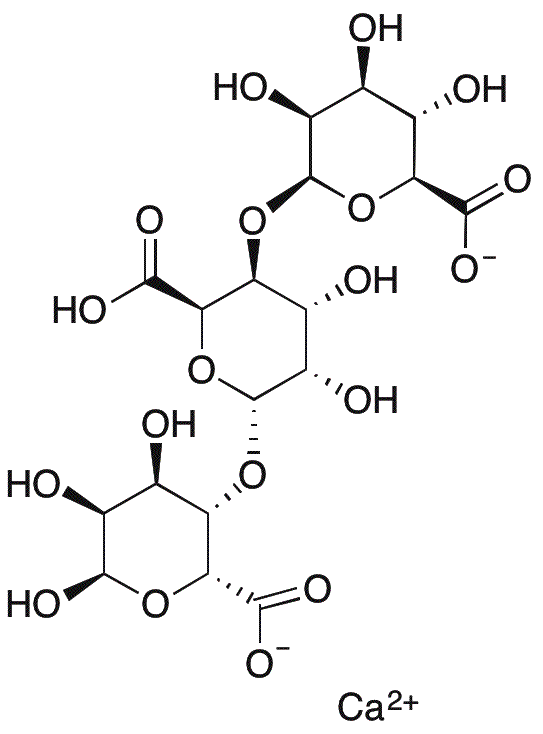Alginic acid calcium salt is widely utilized in research focused on:
- Food Industry: It serves as a thickening agent and stabilizer in various food products, enhancing texture and shelf life. For example, it is commonly used in ice creams and salad dressings.
- Pharmaceuticals: This compound is used in drug formulations as a controlled-release agent, allowing for sustained medication delivery, which can improve patient compliance.
- Cosmetics: Alginic acid calcium salt is incorporated into skincare products for its moisturizing properties, helping to maintain skin hydration and improve texture.
- Biotechnology: It is employed in cell encapsulation techniques, which are crucial for tissue engineering and regenerative medicine, providing a supportive environment for cell growth.
- Agriculture: This compound is used as a soil conditioner and plant growth enhancer, improving nutrient uptake and promoting healthy plant development.
General Information
Properties
Safety and Regulations
Applications
Alginic acid calcium salt is widely utilized in research focused on:
- Food Industry: It serves as a thickening agent and stabilizer in various food products, enhancing texture and shelf life. For example, it is commonly used in ice creams and salad dressings.
- Pharmaceuticals: This compound is used in drug formulations as a controlled-release agent, allowing for sustained medication delivery, which can improve patient compliance.
- Cosmetics: Alginic acid calcium salt is incorporated into skincare products for its moisturizing properties, helping to maintain skin hydration and improve texture.
- Biotechnology: It is employed in cell encapsulation techniques, which are crucial for tissue engineering and regenerative medicine, providing a supportive environment for cell growth.
- Agriculture: This compound is used as a soil conditioner and plant growth enhancer, improving nutrient uptake and promoting healthy plant development.
Documents
Safety Data Sheets (SDS)
The SDS provides comprehensive safety information on handling, storage, and disposal of the product.
Product Specification (PS)
The PS provides a comprehensive breakdown of the product’s properties, including chemical composition, physical state, purity, and storage requirements. It also details acceptable quality ranges and the product's intended applications.
Certificates of Analysis (COA)
Search for Certificates of Analysis (COA) by entering the products Lot Number. Lot and Batch Numbers can be found on a product’s label following the words ‘Lot’ or ‘Batch’.
Numéro de catalogue
Numéro de lot/série
Certificates Of Origin (COO)
This COO confirms the country where the product was manufactured, and also details the materials and components used in it and whether it is derived from natural, synthetic, or other specific sources. This certificate may be required for customs, trade, and regulatory compliance.
Numéro de catalogue
Numéro de lot/série
Safety Data Sheets (SDS)
The SDS provides comprehensive safety information on handling, storage, and disposal of the product.
DownloadProduct Specification (PS)
The PS provides a comprehensive breakdown of the product’s properties, including chemical composition, physical state, purity, and storage requirements. It also details acceptable quality ranges and the product's intended applications.
DownloadCertificates of Analysis (COA)
Search for Certificates of Analysis (COA) by entering the products Lot Number. Lot and Batch Numbers can be found on a product’s label following the words ‘Lot’ or ‘Batch’.
Numéro de catalogue
Numéro de lot/série
Certificates Of Origin (COO)
This COO confirms the country where the product was manufactured, and also details the materials and components used in it and whether it is derived from natural, synthetic, or other specific sources. This certificate may be required for customs, trade, and regulatory compliance.


